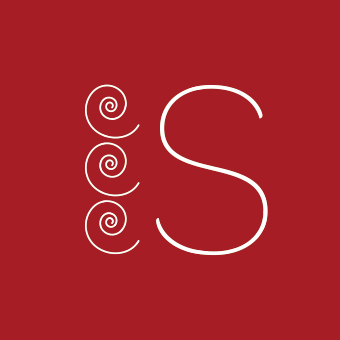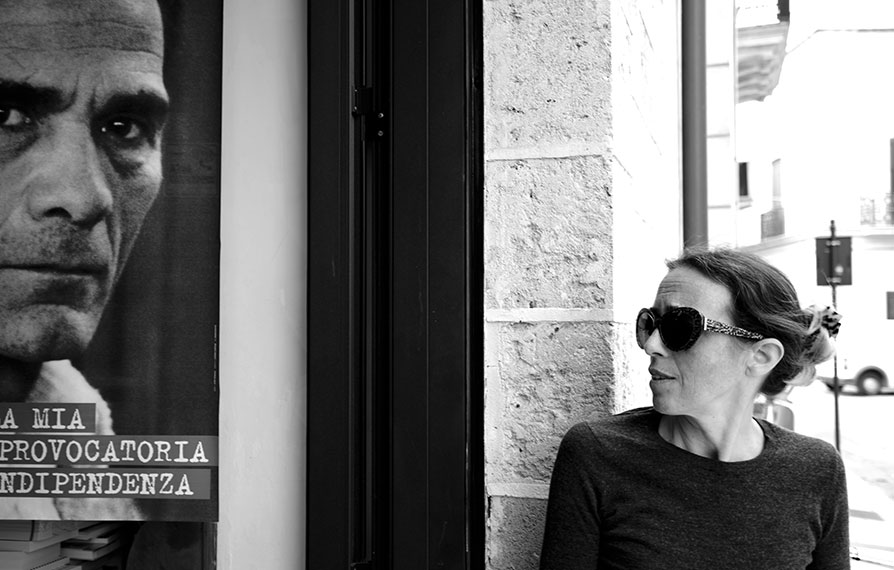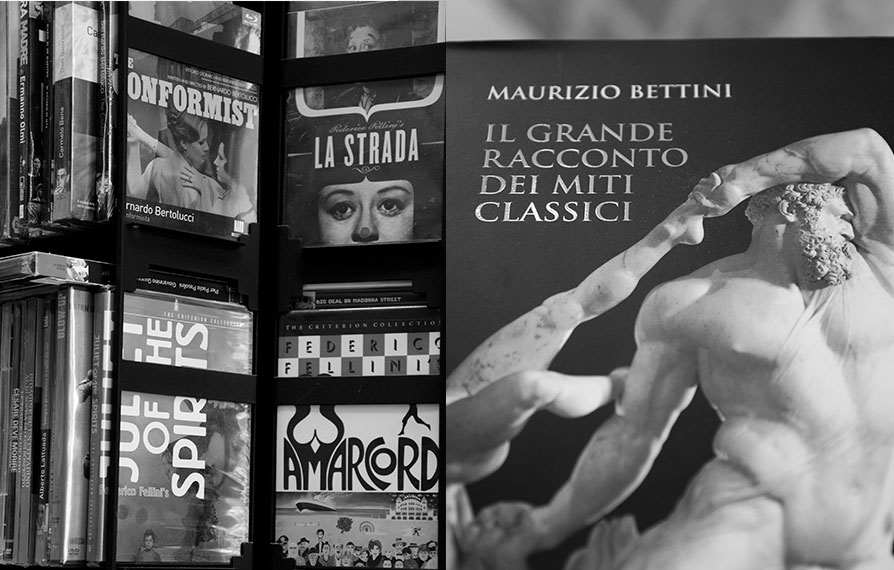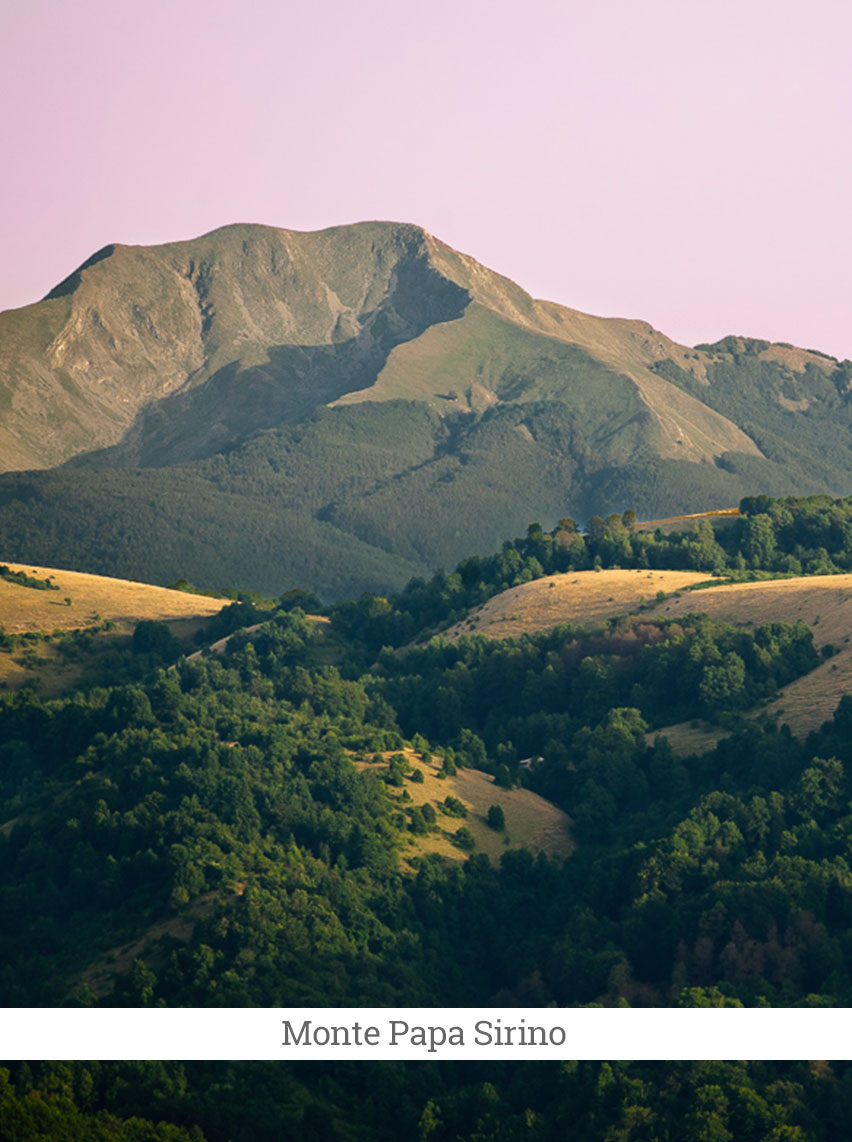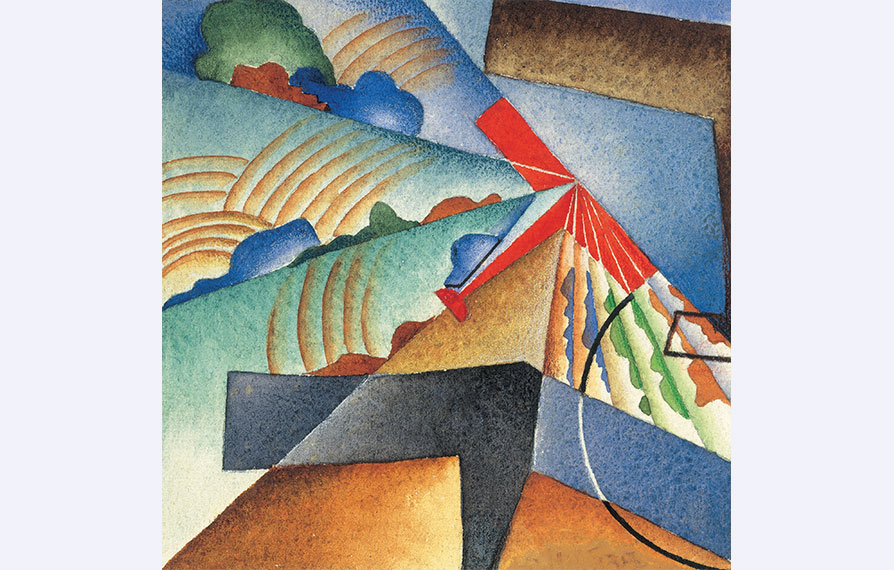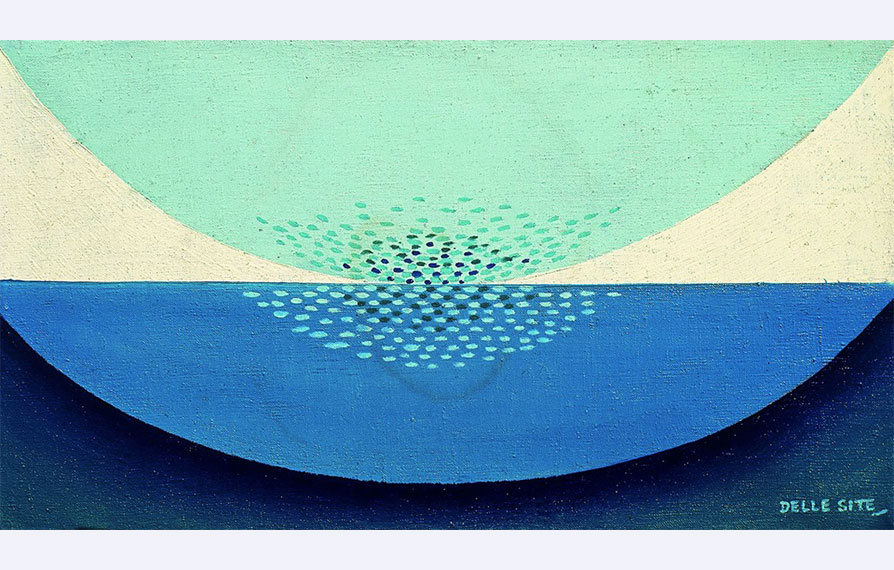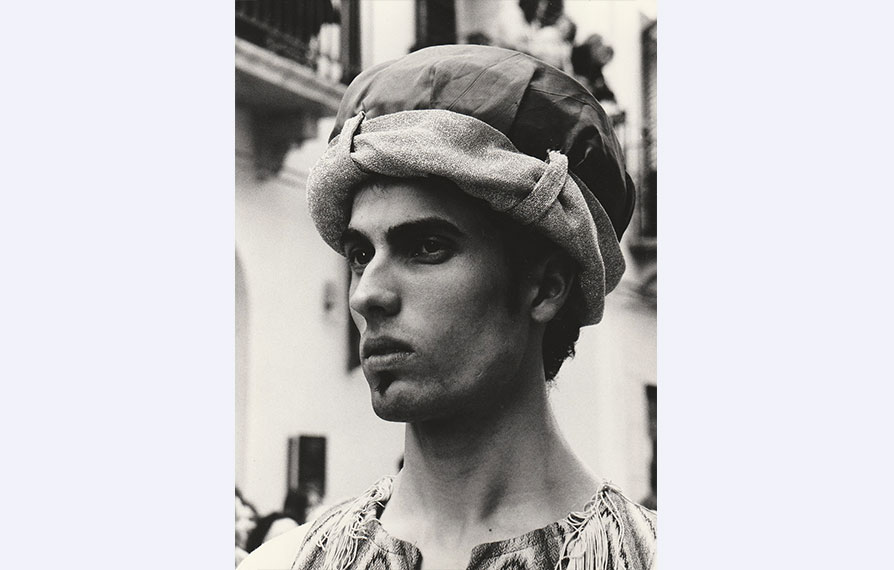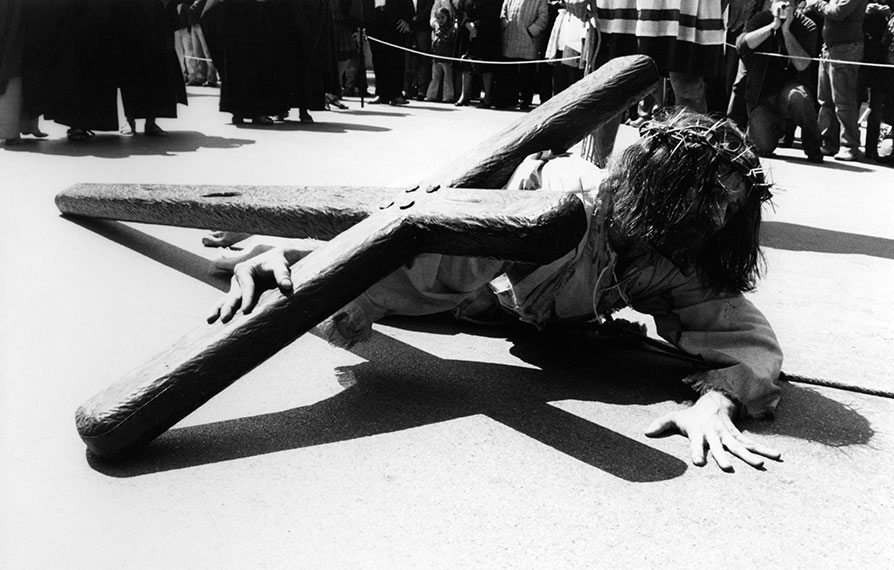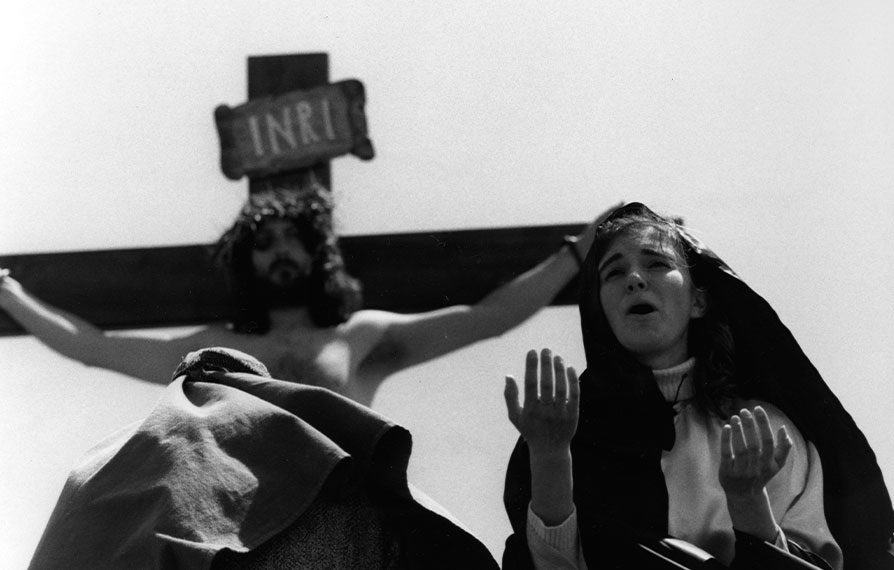
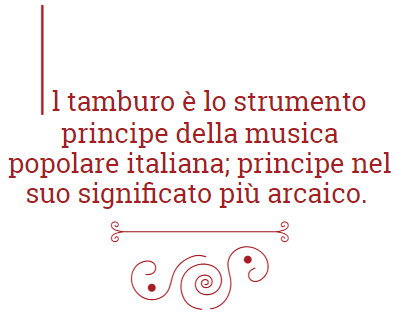
Infatti, è essenzialmente poverissimo nella fattura, costruito con materiali facilmente offerti all’uomo dalla natura – pelle animale (di capra o capretto), legno e, a volte ma non sempre, pezzetti di latta o altro metallo di poco valore per i piattini (o cimbali) di accompagnamento lungo il bordo.
Il nostro tamburello italiano o tamburo – ce ne sono di diverse circonferenze – è detto ‘a cornice’ proprio per la cornice di legno che contorna la pelle animale sulla quale il percussionista batte il tempo, dando origine alla vibrazione sonora, che costituisce la musica del tamburo, o se vogliamo, la sua voce.
TAMBURO, IL RITMO DEL CUORE



Il tamburo è l’unico strumento musicale presente in tutte le culture del mondo, dagli indiani d’America all’estremo Oriente, dal nord Europa all’Africa, e il Mediterraneo dall’Italia al mondo arabo. Questo, in ogni epoca della storia. Ci sono testimonianze primitive dell’uso di strumenti a percussione di forma circolare. A noi vicine, le immagini dell’epoca fenicia o romana:
Una danza continua, le cui movenze ricordano i nostri antenati, il viaggio che dalla semina conduce al raccolto. Che lo si eserciti come ballo o che soltanto lo si apprezzi per il valore simbolico.
Sono soltanto esempi. L’iconografia ne è ricca, sia popolare laica, sia cattolica cristiana.
Dalle origini mitologiche all’uso nei campi, più di recente. La storia del nostro paese e, in particolare, del Sud, ci consegna la musica popolare come madre di ogni ritmo. Non a caso l’universalità dello strumento descritto, come si diceva, presente in ogni continente, nasce proprio dalla sua peculiarità:
le sacerdotesse fenice usavano suonare il tamburello nei riti propiziatori per la fertilità; i romani lo utilizzavano ad accompagnare le feste dionisiache, vino, canti e musica nelle ville di Pompei, e lo raccontano gli stessi affreschi salvati dalla distruzione della città antica.
Ci sono anche uomini e donne, per lo più anziani oggi, che hanno creato maniere di suonare, stili, che portano quindi il loro nome, alla maniera di…
Si accennava al mondo dei campi. Dal medioevo ad oggi la musica popolare, con il suono del tamburo, semplice, potente, evocativo, profondo o acuto, è servita a più scopi. Sul ritmo nascono rime e invocazioni, proteste e incoraggiamenti, riti propiziatori di derivazione pagana in favore della fertilità in senso lato, dell’amore come forma di corteggiamento, provocazione, sfida. Il lavoro nei campi e la fatica di guadagnarsi il pane, la necessaria ricompensa e la protesta in caso contrario, in nome di una sociale giustizia. Sono tutti temi che hanno attraversato il canto popolare dando corpo, voce e musica proprio a questi sentimenti di comunanza.
Il culto mariano, soprattutto nella regione Campania, ha riadattato la musica popolare in chiave religiosa, sacra; il popolo con le cosiddette ‘tammurriate’ (e qui il tamburo usato è di dimensioni più grandi, la tammorra) si rivolge direttamente alla Madonna
Il tamburo non è l’unico strumento del mondo popolare – spesso ad esempio è accompagnato da piccole nacchere o castagnette (così dette nel vesuviano), indossate e suonate dai danzatori sul ritmo della percussione – ma è certamente, il tamburo, l’oggetto musicale che meglio rappresenta nella sua stessa struttura la filosofia della musica nata dal popolo: una musica ancora viva nel nostro Sud e che continua a garantire il legame profondo che unisce l’uomo meridionale alla sua storia. E’ una musica circolare. Come il sole, come la luna, come il ciclo intero della vita.
il tempo sul tamburo rievoca, o addirittura imita, il ritmo del cuore. Il primo e più antico suono che l’orecchio umano abbia mai percepito, addirittura in se stesso.
(sette Madonne, secondo la tradizione quasi leggendaria, sette Sorelle, sei belle ed una nera), per una grazia che si chiede cantando e suonando.
Il suonatore e i danzatori: nella cultura salentina, leccese, il tamburo accompagna invece il violino perché la musica ripetuta e ipnotica risvegli nella tarantata, quasi sempre donna, le capacità innate di guarigione, contro il veleno del ragno. E qui parliamo di pizzica: il morso vero o presunto, reale o immaginato, sempre certamente simbolico, l’espiazione del male e la liberazione attraverso la musica.
Difficile sintetizzare in poche righe la sacralità che accompagna l’uso del tamburo anche laddove il rito o l’iniziativa musicale prende forma da una semplice necessità di aggregazione, come la festa, una tarantella via l’altra; c’è sempre nel sottofondo del ritmo il passo antico di una sonorità che ci appartiene, nel profondo. Quasi magica. Come la terra, la nascita, il cuore che batte.
E forse ancor prima di nascere. Ecco il battere sulla pelle animale. E non c’è niente di scritto in questa musica che si tramanda di generazione in generazione, di padre in figlio, di nonno in nipote. E’ a trasmissione orale e manuale: il movimento delle mani, quella che regge lo strumento e quella che lo percuote, dall’impugnatura alla riproduzione del suono in tempo binario o terzinato, si impara osservando e provando assieme al maestro della tradizione, in genere un riconosciuto ‘grande vecchio’ del paese,
così al Sud, dove ancora è molto forte la cultura della musica sul tamburo e altrettanto forte la gelosia che accompagna la sapienza. Tecniche conosciute da centinaia di anni, ma riposte nelle mani di pochi.
Per accordare un tamburo servono acqua e fuoco, acqua per allentare la pelle, fuoco per renderla più tesa. Umidità e calore. E torniamo alle origini, per fare musica.




